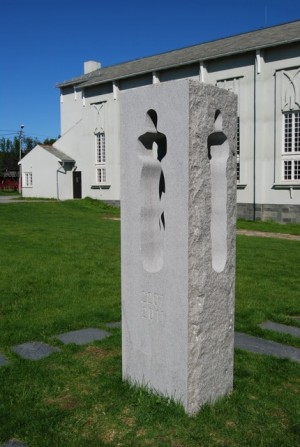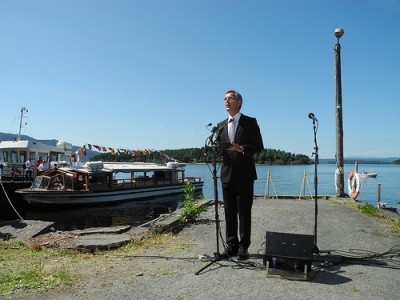Memorials were being held all over Norway on Monday as state and community leaders lent support to survivors of the terrorist attacks of July 22, 2011. Prime Minister Jens Stoltenberg, who had a full schedule of appearances on the second anniversary of the attacks on his government, said he thinks such memorials will continue, in a subdued manner.

“I think we still need this day,” Stoltenberg told Norwegian Broadcasting (NRK), to remember the 77 victims of the attacks, to grieve together and “to find strength” in being together. He made his remarks in an early morning live interview before heading for ceremonies on Monday at the government complex in Oslo that was bombed (10am), at the Oslo Cathedral (noon) which became a gathering point in the days after the attacks and, finally, to the island of Utøya (2pm), where 69 persons were killed in a massacre.
Recent studies have shows that many of the survivors of the bombing and massacre are still suffering flashbacks and trauma from their ordeal. Critics have claimed that not all are getting enough help, while others say the government must do more to fight racism and counter the extreme right-wing attitudes that led to the attacks by a young, white Norwegian man who claimed he was trying to save Norway from the effects of immigration. Recent surveys, however, have shown that a vast majority of Norwegians support immigration and think it has enriched Norwegian society.

The first major ceremony on Monday, at the bombed government headquarters known as Regjeringskvartal, was attended by three government ministers in addition to Stoltenberg and featured a wreath-laying, a memorial address by Stoltenberg and a trumpet solo of the song “Mitt lille land” (My Little Country), which has become a source of comfort for victims since it was played at the first memorials following the attacks.
Other memorials were planned in towns and cities around the nation that were directly affected by the attacks. Many of the memorials were to be held around the monuments donated to communities last year.
The island of Utøya was open all weekend for survivors and victims’ families wanting to gather for their own private memorials. “It will be a day with no pressure and will peace and quiet,” John Hestnes, deputy leader of the national support group formed after the attacks. “Folks will be free to wander around at their own pace.”
Crown Prince Haakon and Crown Princess Mette-Marit were making an abrupt shift in mood after a weekend of celebrating the heir to the throne’s 40th birthday, which included the crown prince joining hundreds of guests at the royal estate by parachuting into his party. On Monday, both he and and his wife, who organized his party, would be attending the noon memorial service at the Oslo Cathedral.
Not everyone was joining in the spirit of the July 22 memorials. Despite the hundreds of thousands of Norwegians who turned out for the spontaneous gatherings that followed the attacks two years ago, a recent study showed that 40 percent of the population took no part in the public mourning. A survey conducted by research group NEG (Norsk etnologisk granskning) found that 75 of 329 person responding either didn’t take part in the public memorials or did so with reservations, citing a need, for example, for more religious neutrality or their own doubts over how genuine the public displays of mourning really were.
Views and News from Norway/Nina Berglund

